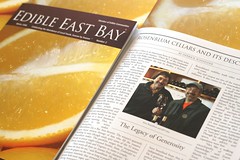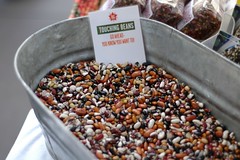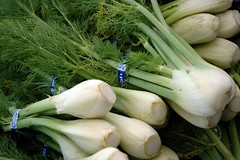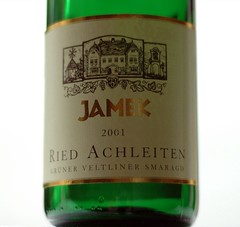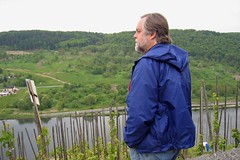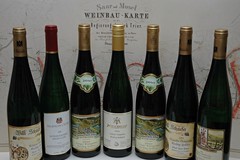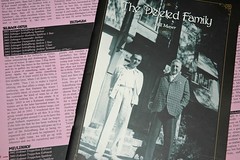His Subject Is Fine German and Austrian Wines
If you chat with Bill Mayer at the Berkeley Farmer's Market where he shops, you might think he's a Berkeley professor. He has the distinguished look, the liberal politics, the modulated tone, and the extensive knowledge about every subject that might come up in conversation. And in a way, Bill is a teacher: His subject is fine German and Austrian wines, and his business, The Age of Riesling, is his metaphorical classroom.
The Age of Riesling isn't a typical wine store. Bill runs it from his North Berkeley home, storing the wine in a temperature-controlled warehouse until you order it. Typical store or not, you won't find a broader inventory of the best German and Austrian wines outside of those countries. I'm convinced that everyone who's passionate about these wines eventually finds their way to Bill, and once they do, wonders how they ever made it so far without knowing him. He carries wines from a variety of importers, but the bulk of his catalog comes from Terry Theise's portfolio.
The newsletters Bill sends out about the wines he's tasted that year are treasures, his prose painting portraits of the people and the regions alongside the lyrical descriptions of the wines. He's travelled to Germany almost every year since 1990, and Austria only slightly less, visiting producers and tasting the wines so he can decide which to carry that year. Melissa and I tagged along with him for a few visits while we were in the Mosel, and we noticed the warmth and affection he and the wine makers had for each other. These are his friends, his extended family, and the feeling is mutual.
"A String of Accidents"
Like most people in the wine industry, Bill found his way to the business through "a string of accidents." He started working at a wine store because school required a job with more regular hours than his carpentry work, and he became hooked. He eventually found his way to the now-defunct Pacific Wine Company and developed an interest in German wines that paralleled his love of German culture in general. In the early 90's, Bill's knowledge of these wines was unusual: "I didn't know a whole lot then, but it was more than anyone else." When the Pacific Wine Company closed, he decided to sell German wine directly to some of his former customers, and The Age of Riesling was born.
And now it's maturing into a different form. Bill has started importing a small number of wines from Austrian producers. "I've fallen hard for Austria: the culture, the beauty of the land, and the wine culture," he says of his decision to import these wines. He'll focus on lesser-known producers and regions. "I wouldn't do it unless I could do small estates," he explains. "You feel like you're dealing not just with someone who's hand making the wines, but making them in an individual way that expresses a family and a town and a culture." The first shipment should arrive in March, so keep an eye out. Since Bill is doing the importing himself, he hopes to offer some good values for customers.
His Real Life
Bill is passionate about wine, but even more so about poetry. He considers poetry his real life, the one that The Age of Riesling supports. He started writing his own poems at the urging of a 10th-grade teacher, and he hasn't stopped since. He doesn't put a label to the type of poetry he writes, preferring to say that "poetry is meant to have content, and is meant to delight or move its readers. What it's done since the time of Gilgamesh." Melissa and I have been fortunate enough to hear him read his work—that even, resonant voice serves him well in readings—and we'd recommend you pick up one (or more!) of his books, which are available directly from him.
You can see why I chose The Age of Riesling for Tyler's Wine Blogging Wednesday theme: wine shops that feel the love. While The Age of Riesling doesn't have a storefront, it's a resource that anyone who loves these wines should know about. Check out the site, and drop Bill a note. Tell him I sent you.

